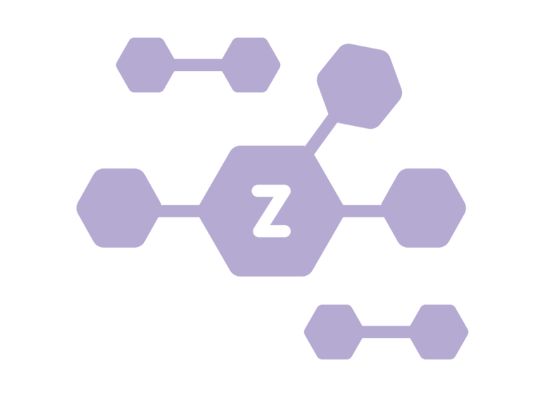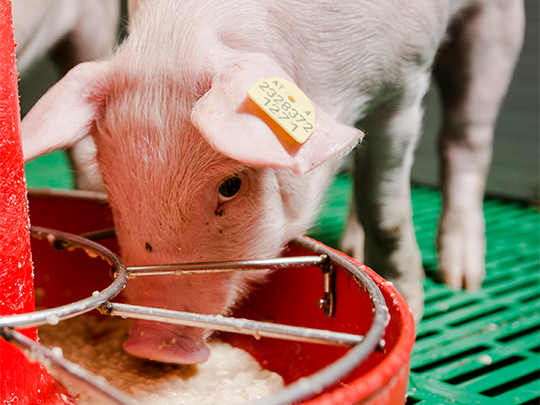Zinc oxide ban for pharmacological doses: Weaning piglets successfully thanks to phytogenics - part 1
Soon to be: as of June 2022, the five-year transitional period for the use of zinc oxide as a veterinary medicinal product in the EU will expire. This ban is challenging the animal husbandry sector, especially pig production, as zinc oxide in therapeutic doses has been used widely to help piglets overcome the health challenges that may arise during the weaning period.
Therefore, it's an appropriate time to look at possible alternatives to support the sensitive gastrointestinal tract and the immune system of young animals while ensuring farmer's profitability. And beyond, if this alternative proves to be a sustainable solution whose application contributes to environmental protection, that would be brilliant news, wouldn't it?

Small but mighty
Zinc itself is an essential trace element and is present in the body only in minimal quantities. But according to the motto "small but mighty," these minimal traces have a more significant effect than perhaps suspected. Besides, zinc is a component of many enzymes involved in many processes of the organism, e.g., the fat, carbohydrate, and protein metabolism; the DNA synthesis; the proper functioning of the immune system; muscle building, to mention some (1).
Weaning: a challenge
Weaning represents one of the most challenging periods in a piglet's life, thus pushing farmers to ensure profitable pig production.
But why is weaning that critical and going along with stress, diarrhea, and poor growth? The answer is clear: While weaning happens gradually as a slow process in nature, piglets in modern pig production are abruptly separated from their mothers at a very early age.
The sudden separation of the sow, an unfamiliar environment with new pen mates and new environmental conditions, and the rapid feed change from high digestible liquid milk to solid, vegetable feed inevitably lead to great physiology and metabolism stress in the young animals, often resulting in reduced feed- and thus nutrient intake and even loss of appetite.

This is particularly critical since the supply of protective immunoglobulins decreases over time due to changes in the composition of the sow's milk. At the same time, the development of the body's adaptive immunity is not yet complete. Shortly before and around weaning, this critical period is known as the so-called "window of susceptibility."
Nevertheless, reduced feed intake after weaning can impair the adaptation of the intestinal microbiome to the solid feed, which leads to intestinal dysbiosis, making it easy for potential harmful germs to colonize the intestinal mucosa. The consequences are obvious: increased susceptibility to infections, diarrhea, poor growth rate, up to piglet losses – undoubtedly affecting the profitability of pig production.
Why this ban?
In many EU countries, high doses of zinc oxide are used in pig production to maintain or restore the performance of young animals. Zinc oxide is widely available, and is an effective tool against gastrointestinal bacteria that often cause diarrhea in piglets during the weaning phase.
But the use of zinc oxide also carries health and environmental risks. The zinc used in the feed is excreted in the feces and returned to the field with the slurry. As a heavy metal and due to its water solubility, it accumulates in the soil and endangers the groundwater. This can become a significant problem in the long term, as zinc in high doses is toxic.
Did you know
A possible link between high zinc concentrations and the promotion of antibiotic resistance in animals has also been reported in the literature (2,3,4). With the ban coming into force, treatment feeds containing high doses of zinc oxide (2000-3000 ppm) are banned in pig production, and zinc content being limited to 150 ppm.
Find out more about phytogenics in piglets

Elisabeth Rohrer
After her study in agriculture sciences at the university of natural resources and life sciences in Vienna, Elisabeth joined the Delacon team in December 2013 as Technical Communications Manager - a position, she always exerted with pleasure. Since 2021, her task areas have been extended and thus, she is also supporting colleagues in writing offside the technical focus as Content Manager. Elisabeth describes herself as a great animal and nature lover and prefers to spend her free time high up in the mountains with her little family, away from the hustle and bustle.










